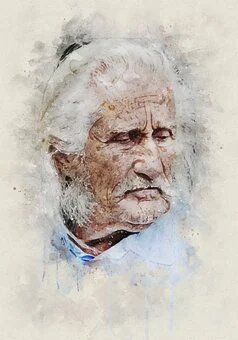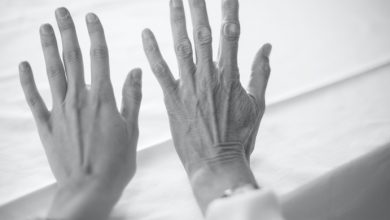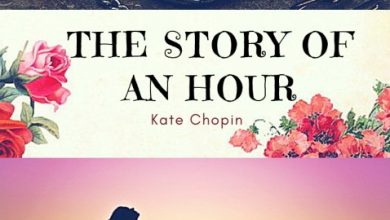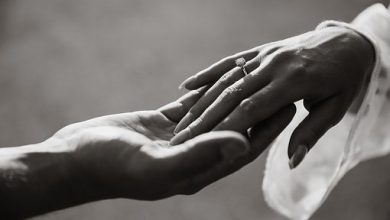
Climbing My Grandfather | Summary and Analysis
Critical Appreciation of Derek Mahon's Climbing My Grandfather
Climbing My Grandfather | Analysis
Climbing my Grandfather is a single-stanza poem written in first-person narrative. It depicts the narrator’s journey in recalling every aspect of his grandfather. He describes it metaphorically, as though his grandfather is a real mountain, and he is braving the trek.
Climbing My Grandfather | Analysis, Lines 1 – 4
I decide to do it free, without a rope or net.
First, the old brogues, dusty and cracked;
an easy scramble onto his trousers,
pushing into the weave, trying to get a grip.
The opening line, “I decide to do it free, without a rope or net.” suggests that the poet is taking a risk. Mountaineering is dangerous, even more so without proper protection. This line also builds the image of a mountain in the reader’s minds, hence making it easier to imagine the grandfather as the mountain itself. This single line establishes the metaphor for the entire poem.
The poet immediately starts climbing from the second line, starting at the shoes. The shoes represent the foothills of the mountain, the very first step. “First, the old brogues, dusty and cracked; an easy scramble onto his trousers, pushing into the weave, trying to get a grip.” Here, the fact that the shoes are described as “dusty and cracked” shows that the grandfather is very experienced. The worn-out shoes symbolise the many paths of life that have been walked, and the situations the grandfather must have lived through. Despite these cracks, they are still usable, which means the grandfather has successfully made it through his hard-working youth. Further, ‘brogues’ are old-fashioned shoes which are not often used in the current days- this hints at the grandfather’s old age. The following lines, where the poet “tries to get a grip” suggests the difficulty of climbing a mountain. Throughout the poem, there is a projection of determination and effort by the narrator to reach his destination.
Climbing My Grandfather | Analysis, Lines 5 – 10
By the overhanging shirt I change
direction, traverse along his belt
to an earth-stained hand. The nails
are splintered and give good purchase,
the skin of his finger is smooth and thick
like warm ice.
The change in direction- choosing to travel towards the hands rather than straight up- is a depiction of the poet wanting to remember every single detail about his grandfather. It also refers to the reality of mountaineering- it is nearly impossible to go straight up. There are always detours and winding routes which one must face before reaching the top, just as the poet must remember every inch of his grandfather if he wants the overall memory to be accurate. The “earth-stained hands” and “splintered nails”, similar to the worn brogues, suggest years of labour and hard work. This time, the implication leans more towards manual labour. The earth-stained hands make the readers wonder whether the grandfather engaged in agriculture-related work in his younger days. The description of his hands being like “warm ice” is an oxymoron. The texture of ice is also smooth yet hard, similar to what the grandfather’s skin is described as. The addition of the word “warm” is to emphasise on the comfort they bring, unlike ice’s freezing nature.
Climbing My Grandfather | Analysis, Lines 10 – 12
On his arm I discover
the glassy ridge of a scar, place my feet
gently in the old stitches and move on.
This line represents two elements– injury and recovery, as well as care and affection. The scar on the grandfather’s arm is a nod towards both the physical and emotional battles of life. It is another hint that the grandfather engaged in a lot of manual labour in his youth, as it is only such work that gives physical scars. On the metaphorical aspect, the scar represents mental weariness and emotional difficulty. The fact that it is a stitched-up scar- which means it is an injury that has healed- means the grandfather has recovered from all of these struggles and moved on. We may look at this in a general viewpoint- everyone must brave their own unique battles, and they each receive different scars- whether physical or emotional- from which they must recover. The gentleness with which the narrator treads implies his affection towards his grandfather, and the tenderness with which he treats him. He does not want to hurt him in any way.
Climbing My Grandfather | Lines 13 – 17
At his still firm shoulder, I rest for a while
in the shade, not looking down,
for climbing has its dangers, then pull
myself up the loose skin of his neck
to a smiling mouth to drink among teeth.
The poet taking a break from climbing adds to the realistic element of the poem. It truly seems like he is climbing a mountain because of these pragmatic details. The tiredness hints at the toil of the journey, and the poet being afraid to look down symbolises how far he has come from the bottom. He is now at a midpoint, which is the final chance to turn back and go down- once he climbs higher, he will be closer to the summit than the foothills. Choosing not to look down symbolises the poet’s determination to continue the journey. The later mention of the grandfather’s “smiling mouth” is an implication towards his disposition. All this time, it is only the physical features which have been described- this phrase, on the other hand, suggests that the grandfather was of jolly personality.
Climbing My Grandfather | Lines 18 – 20
Refreshed, I cross the screed cheek,
to stare into his brown eyes, watch a pupil
slowly open and close.
There is a saying that the eyes are the mirror of one’s soul. The poet finally reaching this point in his memory emphasises that not only recalls physical attributes, but is now remembering emotional aspects as well. When one grows old, the speed of their actions gradually reduces- this is shown by the “slow” speed of the grandfather’s blinking.
Climbing My Grandfather | Lines 20 – 27
Then up over
the forehead, the wrinkles well-spaced
and easy, to his thick hair (soft and white
at this altitude), reaching for the summit,
where gasping for breath I can only lie
watching clouds and birds circle,
feeling his heat, knowing
the slow pulse of his good heart.
The top of the grandfather’s head is the summit. Waterhouse makes an interesting connection between white hair and altitude of the mountain- as altitude increases, the temperature decreases. This is why most mountain summits are covered by snow caps. These snowy peaks are metaphorically linked to the grandfather’s white hair. The poet “gasping for breath” makes it clear that the journey was a long and strenuous one. However, the first thing he does on reaching his destination is lying down and admiring the clouds and the birds. This paints a very serene and happy image. Gazing at the infinitely spreading sky often represents hope and excitement- similarly, the poet’s action represents the excitement of achieving his goal and reaching the top. The simple finality of the gesture- rather than resting for a moment or making a stop, the poet completely relaxes by lying down- symbolises the satisfaction at the outcome of the journey. The poet braved the mountain, and he is content with what he sees at the summit.
The concluding line is perhaps the most important- not just to the readers, but to the poet. Until now, he has described physical features, and hinted at emotional ones. But when he says, “knowing the slow pulse of his good heart.” he clearly defines the goodness of his grandfather’s personality. It may be that this is what he was searching for all along- getting past the obstacles to unlock what is underneath. Only on going through what is outside could the poet wholly remember the grandfather’s heart. Moreover, it acts as a reminder of what is truly important. The poet endured the trek up a difficult mountainous landscape- yet in the end, the thing he appreciates the most is not the outward appearance, but the purity of the heart.



